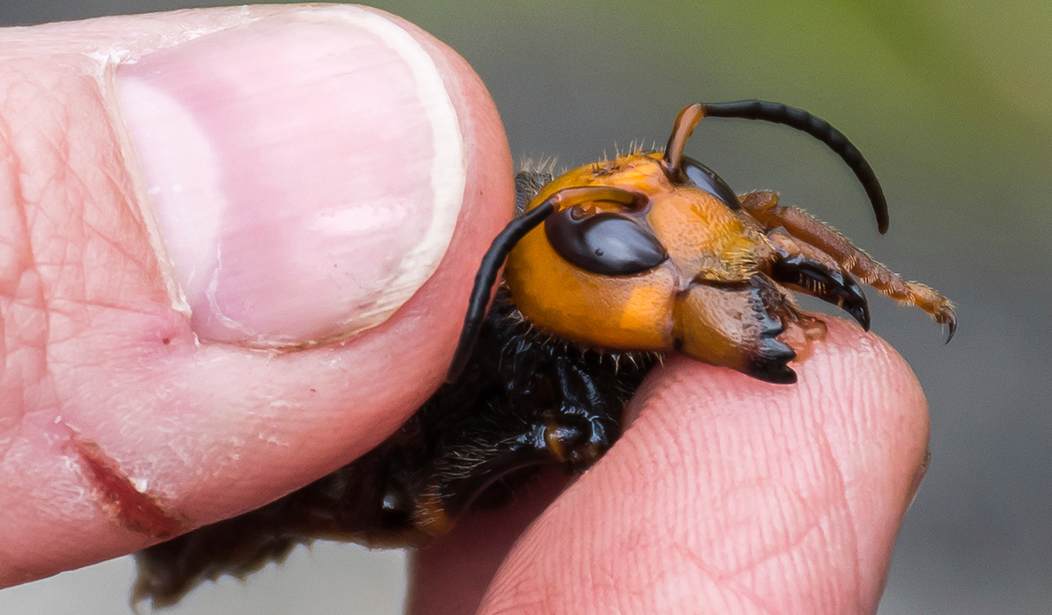
And now for something completely different.
The “murder hornet,” or more accurately the “giant Asian hornet,” is now all over your internet feeds and for good reason. They’re freakin’ huge, can pierce through protective layers of clothing, slaughter hives of honey bees in the range of 14 seconds, and are apparently deadly enough to be fatal to humans. They’ve also been spotted here in the United States.
They aren’t native to America and are an invasive species that, as the name implies, hails from Asia. Specifically, they come from Japan and kill around 40 to 50 people every year according to USA Today.
These hornets seem to have it out for bees, and the bees in Japan have had to live with them as predators since time immemorial. As such, Japanese bees have developed something of a defense against the hornets and I can’t call it anything less than brutal.
The short description is that they cook the hornet alive. The more explanatory version comes from the Science Times:
When grouped, experts have learned that the bees form a ball and trap the hornet inside it.
The bees then start to vibrate and produce heat, somewhat ‘cooking’ the hornet. Japanese bees are said to endure high temperatures, and after an hour, can kill the hornet using their ‘thermal bee ball’ technique.
European honeybees, which are also found in the US, have been observed to attempt to sting the hornet. However, due to the tough exoskeleton of the insect, the bees’ efforts were ineffective. According to a researcher, the Japanese honeybee learned to tailor its tactic through generations.
Somehow the Japanese bees learned that their main predator has a heat tolerance of about 115ºF. The bees themselves can withstand temperatures up to 118ºF.
What does it look like? Watch the video below and see.
The way Japanese bees deal with murder hornets is just brutal but satisfying. pic.twitter.com/8zjUloVzPY
— Brandon Morse (@TheBrandonMorse) May 5, 2020
Just for fun, I added a little bit of flair to the video for my fellow Dark Souls fans.
The #MurderHornet didn't hear the boss music till it was too late. pic.twitter.com/VeXPj5F5ij
— Brandon Morse (@TheBrandonMorse) May 5, 2020
Sadly, this strategy isn’t a sustainable defense against the hornets. It takes a very long time for the bees to cook their enemies and it only really works on one or two at a time. When the hornets attack, they do so in much larger numbers and as I previously mentioned, can wipe a colony of bees out in seconds.
Regardless, it’s fascinating that the bees have figured this complex way of killing their enemies.













Join the conversation as a VIP Member